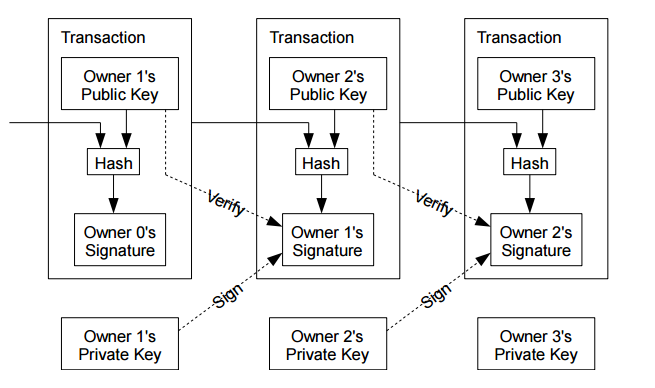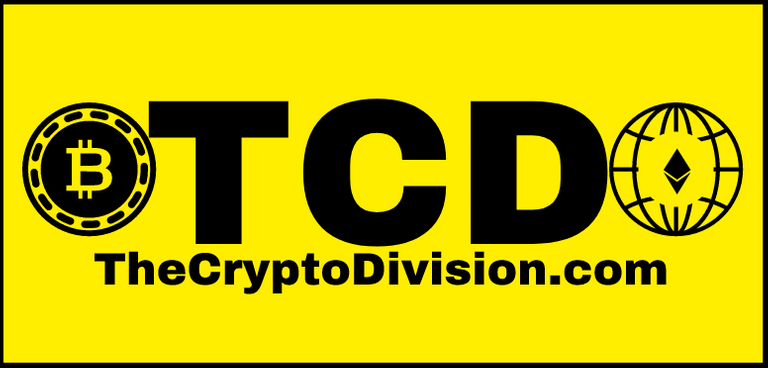
History:
There are many people within the cryptocurrency space who think blockchain is a completely new concept created by Satoshi Nakamoto (Bitcoin’s creator), unfortunately, they would be wrong. The concept and theory of the blockchain, as a database, has been around for 27 years with the theory being developed by some cryptographers named Haber and Stornetta. Haber and Stornetta were looking to create a cryptographically secure system where documents could not be tampered with. Then a year later, in 1992, those same cryptographers added Merkle tree designs which improved the efficiency, and allowed multiple documents to be collected into one block.
The blockchain never really got much attention or traction until Bitcoin used their ideas in its implementation for a currency. Satoshi Nakamoto borrowed heavily upon some well known measures in cryptography to develop and secure Bitcon’s blockchain. Nakamoto added some other necessary components to make Bitcoin work as a currency in a trustless environment - like proof of work, decentralized ledger, and consensus methods. But Nakamoto’s implementation was a huge step forward in using blockchain to change our world.
Blockchain - as a database:
Blockchain technology is merely just a database as said above. It’s a unalterable, cryptographically secured database that is tamper resistant. The blockchain is linear in function as each block is linked by each other through a hash.

The blockchain could be seen as a software design approach too. The blockchain could bind together computers all on the same network which obey some predefined consensus process.
But in order to really understand the blockchain, we need to understand other things too; decentralized consensus, smart contracts, trusted/trustless computing, and proof of work. The hope is that the blockchain and these other concepts will enable developers to build decentralized applications to replace the centralized apps in our current system. But first let's tackle these concepts, real fast.
-
Decentralized consensus:
Basically, consensus is the first layer of a decentralized structure. You need the basic cryptography and decentralization of nodes in order to have this first layer.
-
Smart contracts:
We assume that most smart contract users feel there is no need for a third party intermediary to conduct the transaction. Rather, the parties (two or more) agree on the rules and self manage those rules between computers. Those computers act on behalf of the parties and enforce the rules of the contract. Further, one can also put smart properties or digital assets on the blockchain too.
-
Trusted computing:
A lot of centrally planned companies and governments have trusted authorities, these people could be replaced by a smart contract and the above concepts. This is mainly due to blockchain’s role as the unique, and unchangeable validator. But each person on the network can trust each other with Blockchain because, at least in public blockchains, everything is open for anyone to look at.
-
Proof of work:
And the idea is it requires effort and a majority of the hashing power to overpower the “proof of work” process in order to double spend. Bitcoin’s designer (and first example of proof of work being used) thought this would prevent and discourage any large scale, network ending, attacks. As gaining a 51% hashing power would require a huge, infeasible investment in resources.
Conclusion:
If we combine proof of work, trusted computer, smart contracts, and blockchain together we have a full idea of what a working cryptocurrency platform needs. Smart contracts are a necessary step in building decentralized applications and working towards a more decentralized economy. As time progresses we will hopefully see more decentralized applications and a flatter hierarchical society being utilized because of cryptography.
Sources:
https://link.springer.com/article/10.1007/BF00196791
https://link.springer.com/chapter/10.1007/978-1-4613-9323-8_24
Suggested reading:
https://www.thecryptodivision.com/do-you-really-need-a-blockchain/
https://www.thecryptodivision.com/best-cryptocurrency-referral-programs/
https://www.thecryptodivision.com/235-2/
https://www.thecryptodivision.com/eos-a-look-into-a-budding-platform-coin/
https://www.thecryptodivision.com/the-undervalued-powerhouse-in-crypto/
https://www.thecryptodivision.com/bmining-coins-work/
Follow me on:
Website: http://www.thecryptodivision.com/
Twitter: https://twitter.com/CryptoDivision
Facebook: https://www.facebook.com/TheCryptoDivision/notifications/
Steemit: https://steemit.com/@cryptodivision

This was a good history lesson. I feel it's a good, simplified, primer for people who don't want to dive into the heavy readings about the concepts of many of those terms outlined.
I noticed the numbering is a bit jacked up...oh well.
Ah shucks! Thanks for pointing out the numbering :/ I'm using steempress to upload this from my blog to here. Maybe if I mess around with the steempress settings it might help.
Congratulations @cryptodivision! You have completed the following achievement on the Steem blockchain and have been rewarded with new badge(s) :
Click on the badge to view your Board of Honor.
If you no longer want to receive notifications, reply to this comment with the word
STOPDo not miss the last post from @steemitboard:
Congratulations @cryptodivision! You have completed the following achievement on the Steem blockchain and have been rewarded with new badge(s) :
Click on the badge to view your Board of Honor.
If you no longer want to receive notifications, reply to this comment with the word
STOPDo not miss the last post from @steemitboard:
Congratulations @cryptodivision! You have completed the following achievement on the Steem blockchain and have been rewarded with new badge(s) :
Click here to view your Board of Honor
If you no longer want to receive notifications, reply to this comment with the word
STOPDo not miss the last post from @steemitboard:
Congratulations @cryptodivision! You have completed the following achievement on the Steem blockchain and have been rewarded with new badge(s) :
Click here to view your Board of Honor
If you no longer want to receive notifications, reply to this comment with the word
STOPDo not miss the last post from @steemitboard:
Congratulations @cryptodivision! You have completed the following achievement on the Steem blockchain and have been rewarded with new badge(s) :
Click here to view your Board of Honor
If you no longer want to receive notifications, reply to this comment with the word
STOPDo not miss the last post from @steemitboard:
Congratulations @cryptodivision! You have completed the following achievement on the Steem blockchain and have been rewarded with new badge(s) :
Click here to view your Board of Honor
If you no longer want to receive notifications, reply to this comment with the word
STOPCongratulations @cryptodivision! You received a personal award!
You can view your badges on your Steem Board and compare to others on the Steem Ranking
Do not miss the last post from @steemitboard:
Vote for @Steemitboard as a witness to get one more award and increased upvotes!